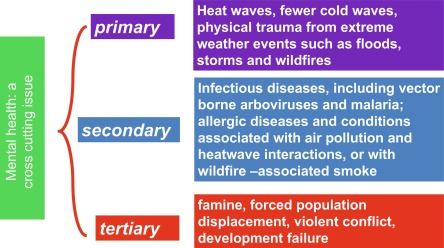This article supports SDG 3 by investigating the association between moderate and vigorous physical activity and Alzheimer's disease mortality
Human health, in the coming decades (and already in some “front-running” regions), is in peril. Although some authorities warn that over-stating such risks can induce paralysis and despair, under-stating them will not generate the intense action that is required. The impact of climate change on the Earth system is now so significant that the next ice age will likely be delayed by at least 50,000 years [201]. If humans do not rapidly change their collective behavior, then this may be their most enduring legacy. It is hoped that this chapter makes a small contribution to SDG3.
This chapter advances Goals 3 and 5 by discussing how pediatric health-care providers and systems can create healing-centered spaces to support IPV survivors and their children.
This chapter advances Goals 3 and 5 by discussing health care providers' opportunity for ARA prevention using a universal education approach that provides information on healthy and unhealthy relationship behaviors and ARA resources.
Although specialized indigenous patient support services exist, gaps in consistent access to services that are culturally specific are present. Better implementation of protective factors like culturally specific support services are critical to reduce disparities and provide better cardiovascular care for Indigenous people
As climate change worsens, it will increasingly impact the water-energy nexus (water power for electricity, water to cool fossil energy generation, energy for irrigation...). This One Earth Research Article uses climate analog cities, i.e. cities that are currently experiencing the climatic conditions expected in the future for a given city, to explore how future water/energy demands might change. The results are relevant for planning climate adaption (SDG 13) for more sustainable cities (SDG 11).
The paper underscores the urgency of addressing climate change's impact on biodiversity through transboundary conservation efforts, offering guidelines for designing climate-smart marine protected area (MPA) networks in regions like the California Bight, highlighting the need for international coordination to ensure effective protection and adaptation strategies for vulnerable species and ecosystems.
As artificial intelligence (AI) and machine learning become increasingly embedded in recruiting and hiring processes, employers must be aware of the potential discrimination risks these tools can pose. This article relates to SDGs 5, 8, and 10
This Article supports SDGs 3, 10, and 13 by evaluating the effect of ambient temperature on mobility within large cities and urban areas, particularly focusing on the subway system in New York city.
The increased exposure to violence and sexual crimes among Indigenous women, girls, and Two Spirit people results from longstanding historical trauma and anti-Indigenous racism. The Missing and Murdered Indigenous Women, Girls, and Two-Spirit People (MMIWG2S) movement emerged as a result of the need for governments and organisations in the USA and Canada to act against acute violence towards Indigenous people


